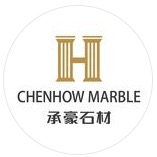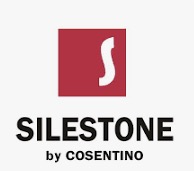Installing marble or granite stone facades requires specific techniques to ensure durability, stability, and aesthetic appeal. Here are the most common methods:
26k+
Happy Customers
700+
Projects Completed
15+
Years of Experience
5+
Award Winner
The following chart will be a helpful guide:
EASY CARE TIPS

Coasters
Use coasters under all glasses, particularly those containing alcohol or citrus juices.

Trivets
While many stones can withstand heat, the use of trivets or mats is recommended.

Dust Mopping
Dust mop interior floors frequently using a clean non-treated dry dust mop. Sand, dirt and grit are abrasive and can damage natural stone.

Mats/Rugs
Mats or area rugs inside and outside an entrance will help to minimize the sand, dirt and grit that may scratch the stone floor. Be sure that the underside of the mat or rug is a slip resistant surface.

Vacuum Cleaners
If used, be sure the metal or plastic attachments or the wheels are not worn as they can scratch the surface of some stones.

Spills
Blot the spill with a paper towel immediately. Don't wipe the area, it will spread the spill. Flush the area with water and mild soap and rinse several times. Dry the area thoroughly with a soft cloth. Repeat as necessary.
Wet Fixing Method
This traditional method involves using a cement-based mortar to adhere the stone to the building surface.
Process:
- Preparation: The substrate is cleaned and leveled.
- Mortar Application: A layer of mortar is applied to both the substrate and the stone.
- Placement: The stone is pressed into the mortar and adjusted for alignment.
- Curing: The mortar is left to cure and bond the stone securely.
Pros:
- Cost-effective.
- Suitable for small-scale projects.
- Strong adhesion in dry climates.
Cons:
- Time-consuming.
- Less durable in areas with freeze-thaw cycles.
- Difficult to replace or repair individual stones.
Dry Cladding Method
This modern technique involves fixing the stones using mechanical anchors or brackets, creating an air gap between the stone and the wall.
Process:
- Framing: A structural framework (usually aluminum or steel) is installed on the wall.
- Anchoring: Stone panels are attached using mechanical anchors, clamps, or brackets.
- Alignment: Spacers ensure uniform gaps between panels.
Pros:
- Durable and long-lasting.
- Easier maintenance and replacement.
- Reduces thermal expansion and contraction issues.
- Provides insulation and ventilation with the air gap.
Cons:
- Higher initial cost.
- Requires skilled labor.
- More complex installation.
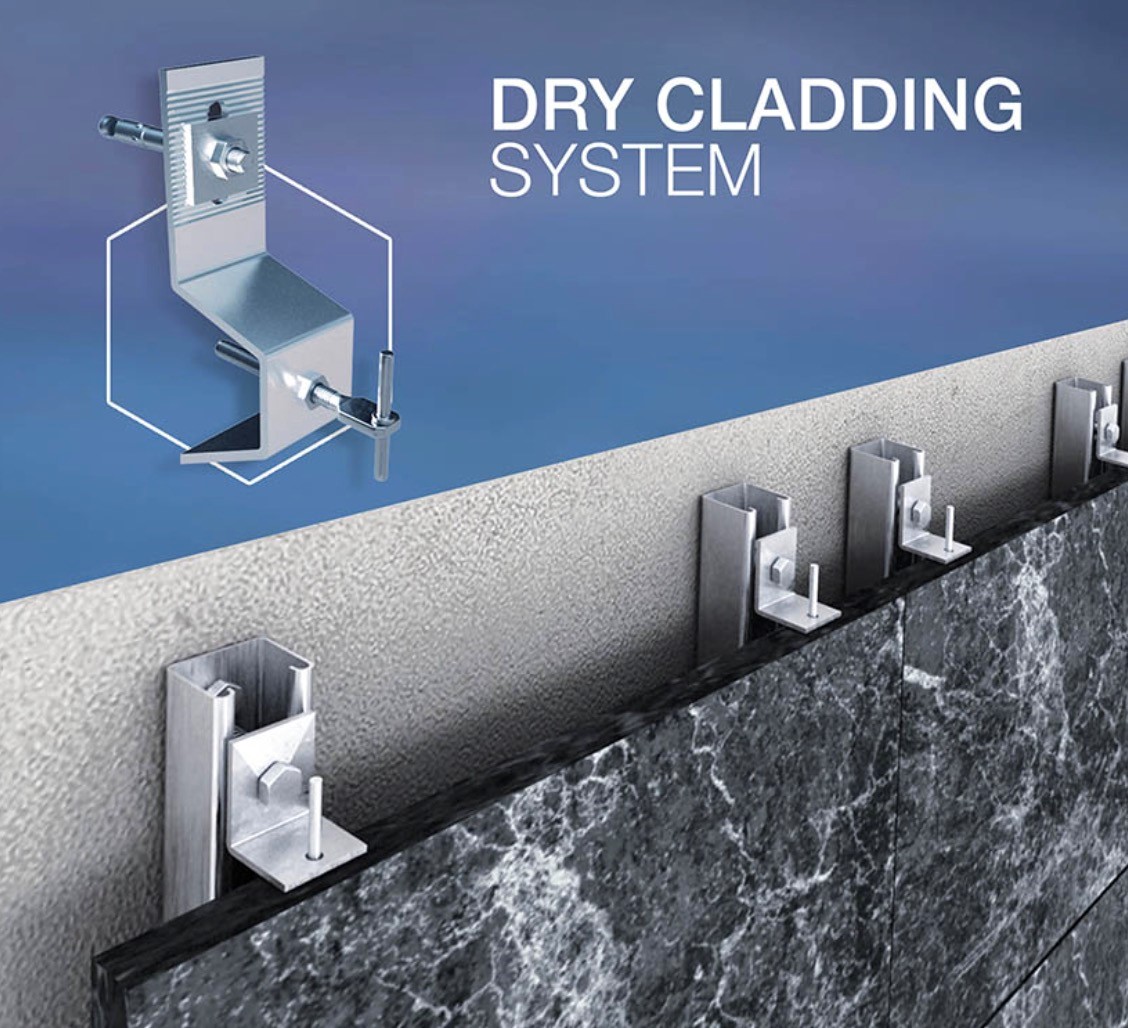
Adhesive Fixing Method
This method uses specialized stone adhesives to bond the panels directly to the substrate.
Process:
- Surface Preparation: Both the stone and substrate are cleaned and primed.
- Adhesive Application: High-strength stone adhesive is applied to the substrate or the back of the stone.
- Placement: The stone is pressed into place, and alignment is checked.
Pros:
- Faster installation.
- Lightweight and less invasive.
- Flexible for complex shapes.
Cons:
- May not be suitable for large or heavy panels.
- Adhesives can degrade over time.
Undercut Anchor System
This specialized system involves drilling undercut holes into the stone and using concealed anchors to hold the panels.
Process:
- Undercutting: Holes are drilled into the back of the stone.
- Anchor Installation: Special anchors are inserted and fixed to the substrate.
- Panel Placement: The stone is attached using brackets or clips.
Pros:
- Provides high strength and stability.
- Ideal for large-format panels.
- Allows for precise alignment.
Cons:
- Expensive and requires advanced tools.
- Skilled labor is necessary.
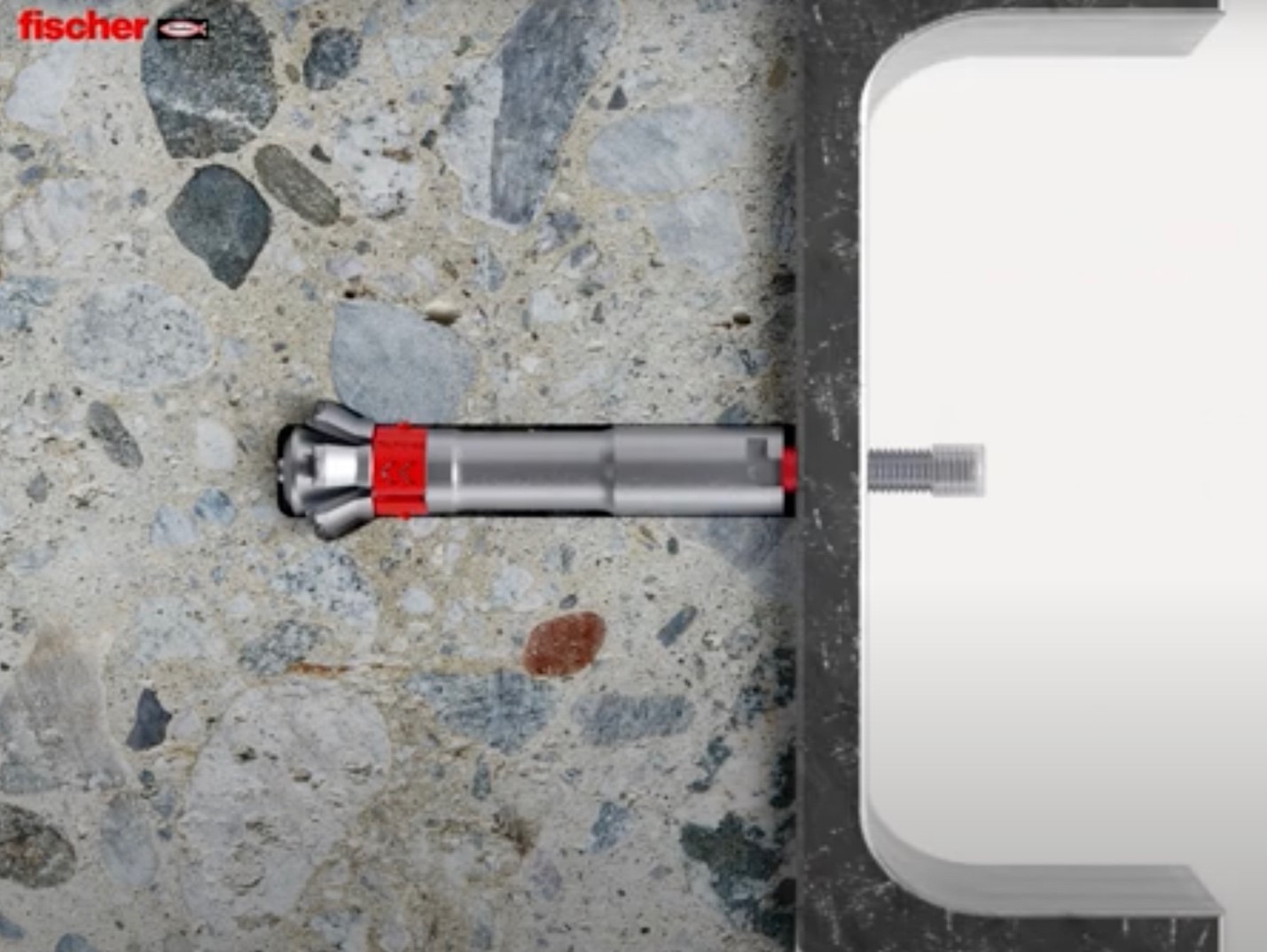
Kerf System
This method involves creating grooves (kerfs) in the edges of the stone and inserting them into a framework.
Process:
- Grooving: Kerfs are cut into the edges of the stone panels.
- Bracket Fixing: Metal brackets or clips are inserted into the kerfs and attached to the framework.
- Alignment: Panels are adjusted for proper fit.
Pros:
- Reliable and durable.
- Concealed fixing mechanism.
- Good for large and heavy panels.
Cons:
- Labor-intensive.
- Requires precise fabrication.
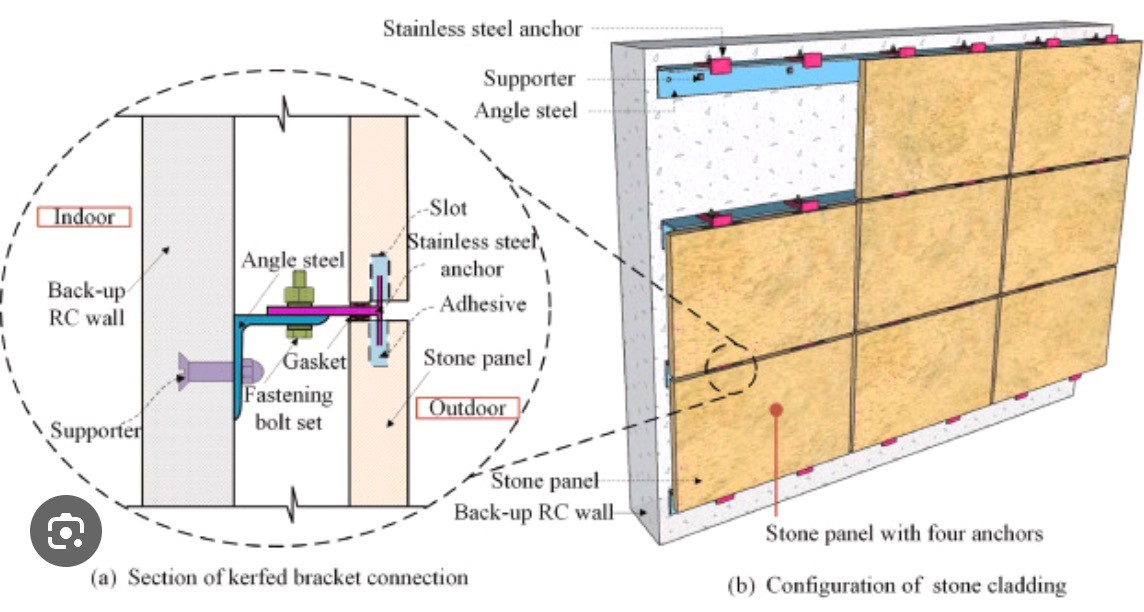
Hybrid Method
A combination of wet fixing and dry cladding, this method uses mechanical anchors along with adhesive or mortar.
Pros:
- Offers the advantages of both techniques.
- Enhances stability and durability.
Cons:
- Complex and requires skilled labor.
- More expensive than single methods.
CLEANING
Clean stone surfaces with a neutral cleaner, stone soap, or a mild liquid dishwashing detergent and warm water. Similar to any item cleaned in your home, an excessive concentration of cleaner or soap may leave a film and cause streaks. Follow manufacturer recommendations.
Use a clean rag mop on floors and a soft cloth for other surfaces for best results. Rinse the surface thoroughly after washing with the soap solution and dry with a soft cloth.
Change the rinse water frequently. In the bath or other wet areas, soap scum can be minimized by using a squeegee after each use. To remove soap scum, use a non-acidic soap scum remover or a solution of ammonia and water (about 1/2 cup ammonia to a gallon of water).
Frequent or over-use of an ammonia solution may eventually dull the surface of some stone types. In outdoor pool, patio or hot tub areas, flush with clear water and use mild bleach solution to remove algae or moss.
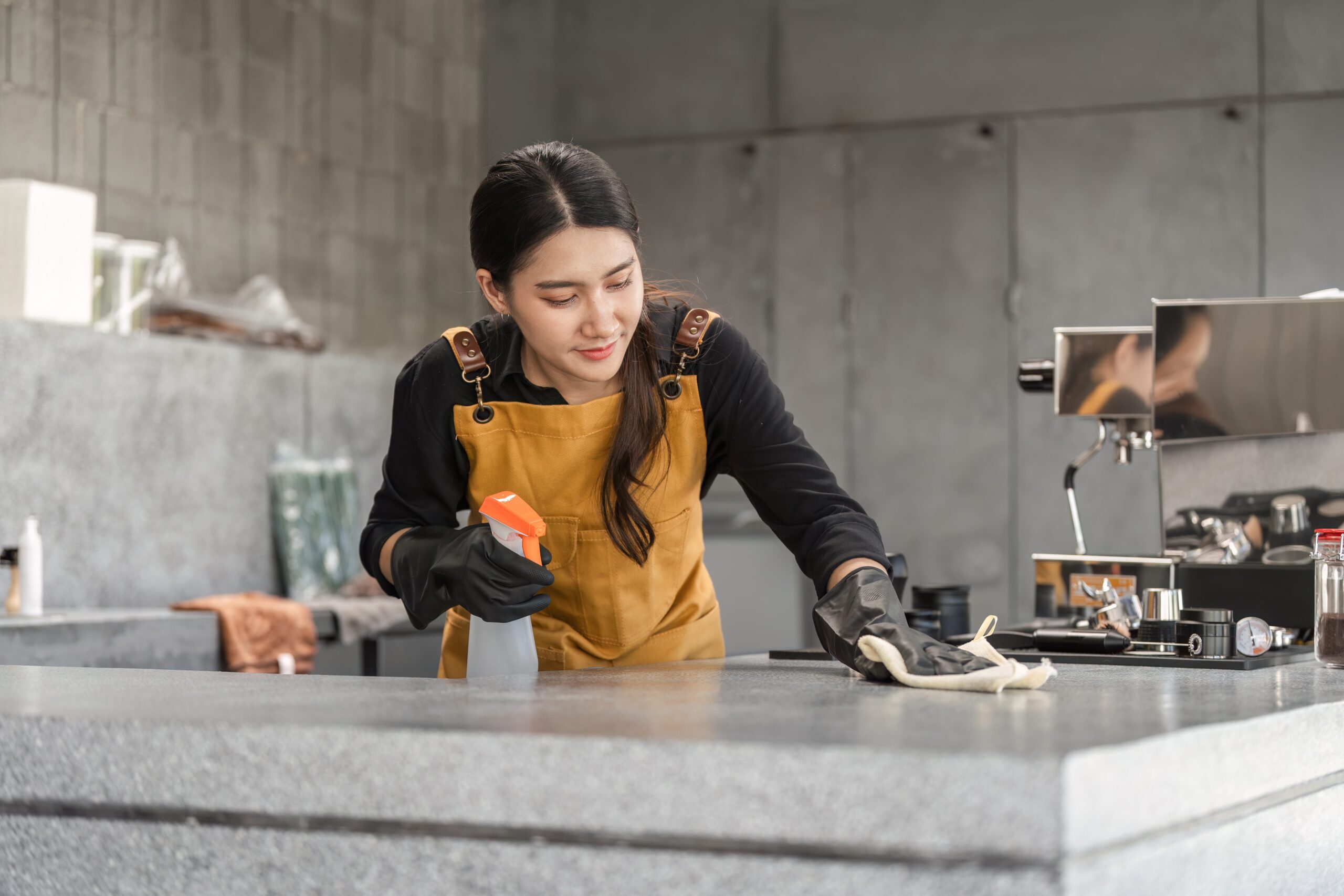
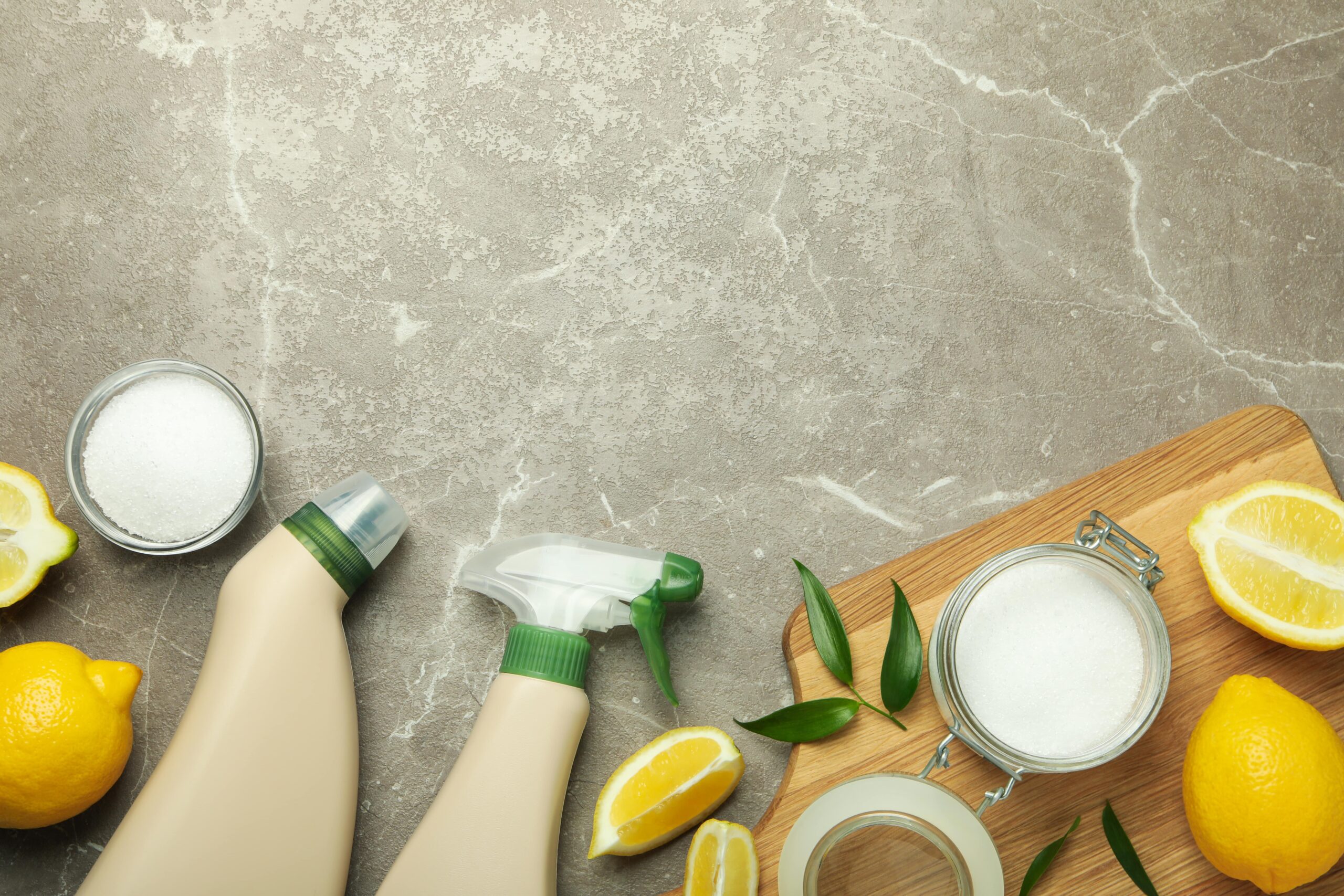
CLEANING PRODUCTS
Many suppliers offer products used for stone cleaning. Products containing lemon, vinegar or other acids may dull or etch calcareous stones.
Scouring powders or creams often contain abrasives that may scratch certain stones. Many commercially available rust removers (laundry rust stain removers, toilet bowl cleaners) contain trace levels of hydrofluoric acid (HF). This acid attacks silicates in addition to other minerals. All stones, including granite and quartzite, will be attacked if exposed to HF.
Do not mix ammonia and bleach. This combination creates a toxic and lethal gas
SEALING
Sealing is a common step taken on some stones as an extra precaution against staining. In fact, the sealing products used in the stone industry are “impregnators” which do not actually seal the stone, but more correctly act as a repellent rather than a sealer.
Sealing does not make the stone stain proof, rather it makes the stone more stain resistant. When consulting with your stone supplier, you may find that many stones do not require sealing. However, applying an impregnating sealer is a common practice.
When considering sealing, remember that sealing the stone does not make the stone stain proof, it makes it more resistant to staining. If a sealer is applied in a food preparation area, be sure that it is non-toxic and safe for use.
Consult with your supplier or sealing manufacturer specific to the type of sealer and frequency of use recommended.
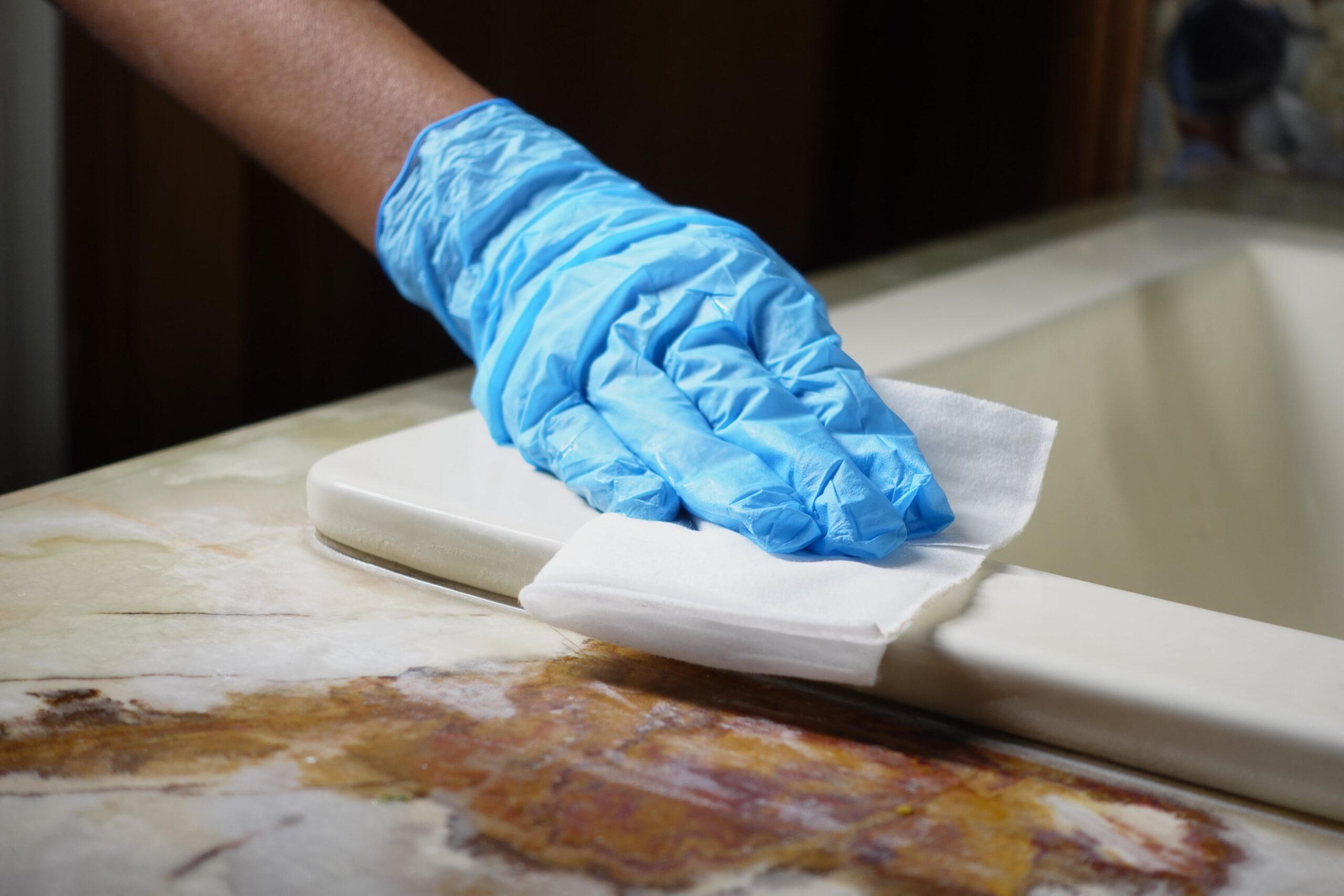
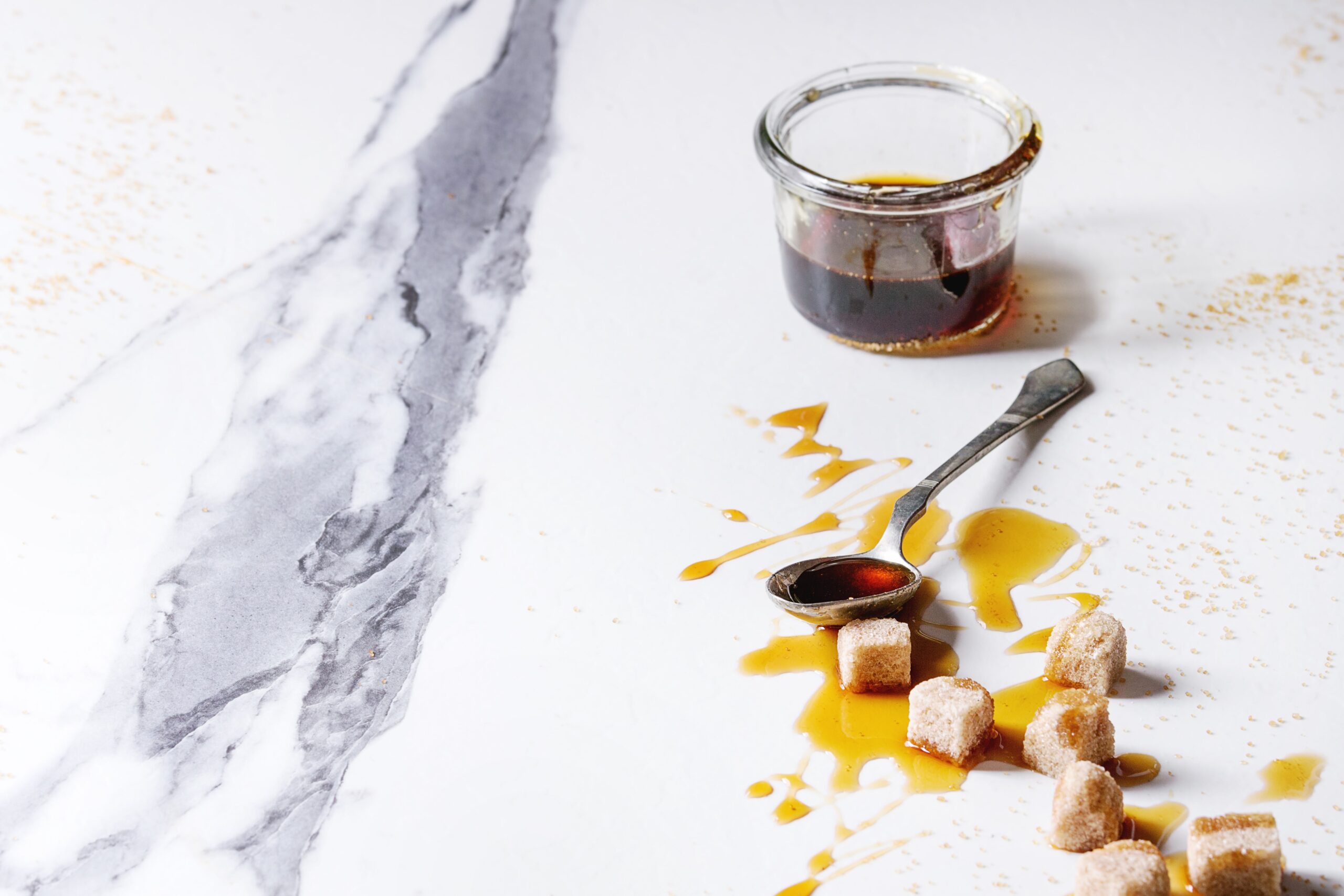
STAIN IDENTIFICATION TIPS
Identifying the type of stain on the stone surface is the key to removing it. Stains can be
oil based, organic, metallic, biological, ink based, paint based, acid based. If you don’t
know what caused the stain, consider likely staining agents that may have been
present. Here are some questions you consider:
– Where is the stain located?
– Is it near a plant, a food service area, an area where cosmetics are used?
– What color is it?
– What is the shape or pattern?
– What occurs in the area around the stain?
– Stain Removal Steps:
Surface stains can often be removed by cleaning with an appropriate cleaning product or household chemical.
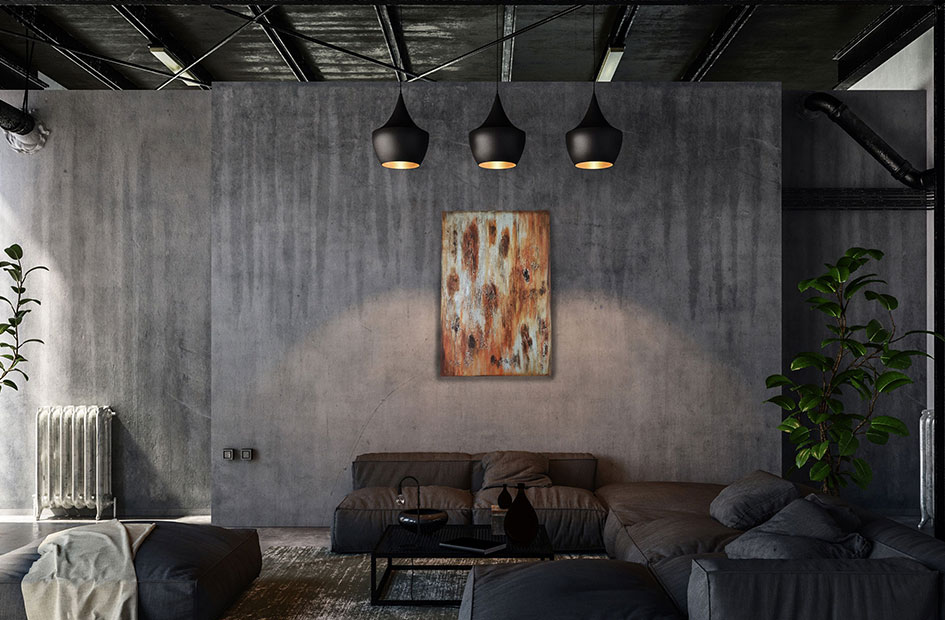
Factors to Consider
- Building Height: Taller buildings typically use dry or hybrid methods for safety and flexibility.
- Climate: Freeze-thaw cycles, humidity, and temperature fluctuations impact method choice.
- Stone Type: Heavier stones often require mechanical anchoring.
- Aesthetics: Visible vs. concealed fixing methods.
- Budget: Some methods, like dry cladding, are costlier but more durable.
By choosing the appropriate method based on these factors, you can ensure a successful and lasting facade installation.
WHAT TYPE OF STAIN IS IT?
The following sections describe the types of stains you may have to deal with and the appropriate household chemicals to use and how to prepare and apply a poultice to remove the stain.

Oil-based
(grease, plumbers' putty, tar, cooking oil, milk, cosmetics) An oil-based stain will darken the stone and normally must be chemically dissolved so the source of the stain can be flushed or rinsed away. Clean gently with a soft, liquid cleanser with one of the following: household detergent, mineral spirits, or acetone.

Organic
(coffee, tea, wine, fruit, tobacco, paper, food, urine, leaves, bark, bird droppings) May cause a pinkish-brown stain and may disappear after the source of the stain has been removed. Outdoors, with the sources removed, sun and rain action will generally bleach out the stains. Indoors, clean with 12% hydrogen peroxide (hair bleaching strength) and a few drops of ammonia.

Biological
(algae, mildew, lichens, moss, fungi) Clean with diluted cleaning solution. Use a 1/2 cup of any of the following: ammonia, bleach, or hydrogen peroxide and a gallon of water. Reminder: do not mix bleach and ammonia.

Ink
(magic marker, pen, ink) On light colored stones, clean with bleach or hydrogen peroxide. On dark colored stones, clean with lacquer thinner or acetone.

Water Spots & Rings
(surface accumulation of hard water) Buff with dry 0000 steel wool.

Fire & Smoke Damage
Older stones and smoke or fire-stained fireplaces may require a thorough cleaning. When the smoke is removed, there may also be some etching (due to carbonic & other acids in smoke). Commercially available "smoke removers" may save time and effort.

Etch Marks
(caused by acids left on the surface of the stone) Some materials will etch the finish but not leave a stain. Others will both etch and stain. Contact your stone dealer or call a professional stone restorer for refinishing or repolishing etched areas.

Scratches & Nicks
Slight surface scratches may be buffed with dry 0000 steel wool. Deeper scratches and nicks in the surface of the stone should be repaired and repolished by a professional.

Using a Poultice
Go to www.marble-institute.com/consumers/poultices/ for more information, or call a stone professional (recommended).

Metal
(iron, rust, copper, bronze) Iron or rust stains are orange to brown in color and follow the shape of the staining object such as nails, bolts, screws, cans, flower pots, metal furniture. Copper and bronze stains appear as green or muddy-brown and result from the action of moisture on nearby or embedded bronze, copper or brass items. Metal stains must be removed with a poultice. (See website on Using a Poultice – www.marble-institute.com/consumers/poultices/. Deep-seated, rusty stains are extremely difficult to remove and the stone may be permanently stained.

Paint
Small amounts can be removed with lacquer thinner or scraped off carefully with a razor blade. Heavy paint coverage should be removed only with a commercial "heavy liquid" paint stripper available from hardware stores and paint centers. These strippers normally contain caustic soda or lye. Do not use acids or flame tools to strip paint from stone. Paint strippers can etch the surface of the stone; repolishing may be necessary. Follow the manufacturer's directions for use of these products, and flush the area thoroughly with clean water. Protect yourself with rubber gloves and eye protection, and work in a well-ventilated area. Use only wood or plastic scrapers for removing the sludge and curdled paint. Normally, latex and acrylic paints will not cause staining. Oil-based paints, linseed oil, putty, caulks and sealants may cause oily stains. Refer to the section on oil-based stains.

Efflorescence
(a white powder that may appear on the surface of the stone) It is caused by the deposition of mineral salts carried by water from below the surface of the stone. When the water evaporates, it leaves the powdery substance. If the installation is new, dust mop or vacuum the powder. You may have to do this several times as the stone dries out. Do not use water to remove the powder; it will only temporarily disappear. If the problem persists, contact your installer to help identify and remove the cause of the moisture.
OUR SERVICES
Our Specializations
Architects
Consectetur Lorem ipsum dolor sit ame consectetur adipisicing elit, sed do eiusmod tempor dolor sit ame consectetur.
Home Plan
Consectetur Lorem ipsum dolor sit ame consectetur adipisicing elit, sed do eiusmod tempor dolor sit ame consectetur.
Road
Consectetur Lorem ipsum dolor sit ame consectetur adipisicing elit, sed do eiusmod tempor dolor sit ame consectetur.
Constructions
Consectetur Lorem ipsum dolor sit ame consectetur adipisicing elit, sed do eiusmod tempor dolor sit ame consectetur.
Home For Sell
Consectetur Lorem ipsum dolor sit ame consectetur adipisicing elit, sed do eiusmod tempor dolor sit ame consectetur.
Development
Consectetur Lorem ipsum dolor sit ame consectetur adipisicing elit, sed do eiusmod tempor dolor sit ame consectetur.
Brands We Work With
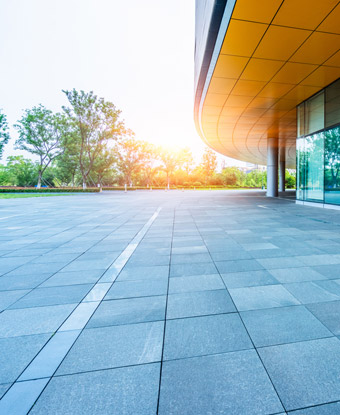
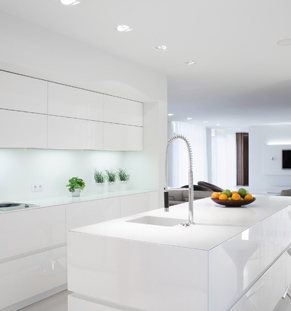
WHAT WE ARE
A Small Efficient
Interior Designing Team
Tempor incididunt ut labore et dolore magna aliqua. Ut enim ad minim veniam quis nostruercitation ullamco laboris nisi ut aliquip ex ea commodo consequat. Duis aute irure dolor in reprehei voluptate velit esse cillum dolore eu fugiat nulla pariatur Duis aute irure dolor in reprehei voluptate veliet esse cillum dolore eu fugiat nulla pariatur..
Ut enim ad minim veniam quis nostruercitation ullamco laboris nisi ut aliquip ex ea commonsequat Duis aute irure dolor reprehei voluptate esseu fugiat nulla pariatur.
OUR PROCESS
See How It Works
Our Testimonial
What Client Says



Eiusmod tempor incididunt ut labore et dolore magna aliqua. Ut enim ad minim veniam, quis nostrud exercitation ullamco laboris nisi ut aliquip ex ea commodo consequat. Duis aute irure dolor in reprehenderit in volupte velit ess cillum dolore eu fugiat nulla pariatur. Excepteur sint occaecat cupidatat non proident, sunt in culpa qui officia deserunt mollit anim id est laborum.
Sonia Roberts- Ui Designer
Eiusmod tempor incididunt ut labore et dolore magna aliqua. Ut enim ad minim veniam, quis nostrud exercitation ullamco laboris nisi ut aliquip ex ea commodo consequat. Duis aute irure dolor in reprehenderit in volupte velit ess cillum dolore eu fugiat nulla pariatur. Excepteur sint occaecat cupidatat non proident, sunt in culpa qui officia deserunt mollit anim id est laborum.
Sophie Pullman- UX Designer
Eiusmod tempor incididunt ut labore et dolore magna aliqua. Ut enim ad minim veniam, quis nostrud exercitation ullamco laboris nisi ut aliquip ex ea commodo consequat. Duis aute irure dolor in reprehenderit in volupte velit ess cillum dolore eu fugiat nulla pariatur. Excepteur sint occaecat cupidatat non proident, sunt in culpa qui officia deserunt mollit anim id est laborum.














